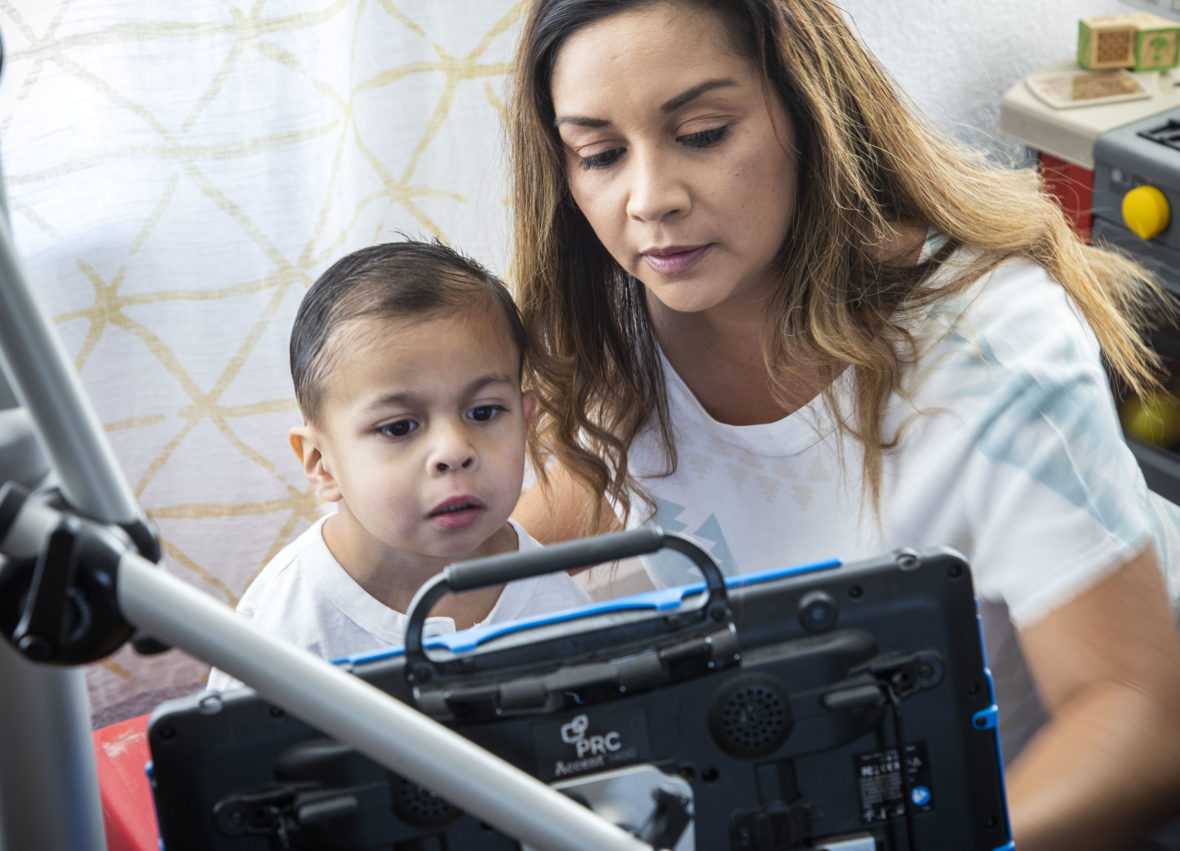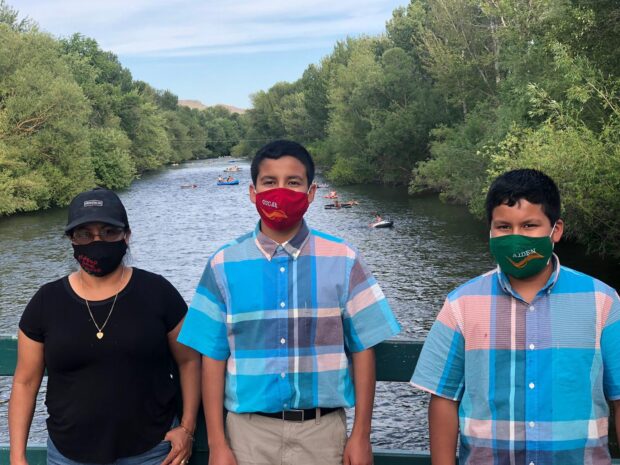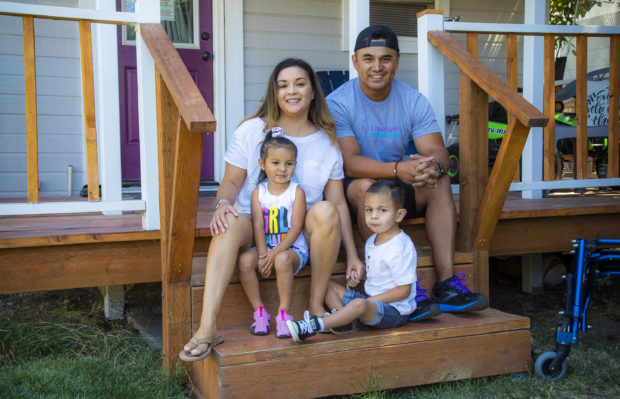
In theory, Boise School District students could be returning to in-person classes in September. But Elizabeth Barrios’ two sons won’t be there.
Her sons, who attend Whitney Elementary and South Junior High, desperately want to go back. But Barrios decided they’ll be enrolled online until at least January.
“It’s not the same, but I’d prefer to do that rather than go back to school (in-person),” Barrios said. “They’re kids. And kids aren’t going to be careful.”
Parents are worried about sending kids back to school under the looming threat of the coronavirus. Latino parents are more worried than most, according to recent surveys conducted in Idaho and across the country.
Surveys show Latino parents are less likely than their white counterparts to send their children back to school for the fall semester. Some, like Barrios, are leaning into distance-learning alternatives. But with disparities in access to high quality online-learning, education experts and parents worry that learning from home could undermine Latino students’ academic success.
“Students were already facing all these educational inequities prior to the pandemic,” said Tania Valencia, a K-12 education policy analyst for UnidosUS, a Latino nonprofit advocacy organization. “We now need to understand that this is going to impact them in a way that we may not have ever seen before.”

Latino parents have a “wide range” of concerns about returning to school
An Idaho Education News survey this summer found that 67% of Hispanic parents said they would send their children back to school this fall, compared to 84% of white parents. The survey was in English, and it didn’t account for the state’s roughly 48,000 Spanish-speakers who told the Census Bureau they speak English “less than well.” Reporters shared an informal Spanish survey on Facebook asking parents if they would send students back to school. Of 52 responses, 50 were “no.”
National polls confirm this trend. A bilingual poll from Latino Decisions found that 53% of Latino parents were considering keeping their children home from school this fall.
Parents are concerned their kids will catch the virus that has hurt communities of color. They’re worried about affording child care or health care costs, and unsure whether schools can protect their students.
The coronavirus has had a disproportionate impact on Latino families in Idaho. Currently, about a third of all coronavirus cases with known ethnicity are in Idaho’s Latino community — an outsized share for a group that makes up about 13% of the state population. In heavily Latino regions like Canyon County or the Magic Valley, the disparity is worse.
Margie Gonzalez, director of the Idaho Commission on Hispanic Affairs, said the organization is hearing a “wide range” of concerns from parents.
Many parents — particularly Spanish-speakers who call their offices for help — don’t seem to have a lot of trust in Idaho public schools right now, Gonzalez said.
“The schools themselves have not done a very good job of communicating with the parents on what their plans are,” Gonzalez said. “It’s a statewide issue.”
Parents who want to take advantage of remote learning don’t always have that opportunity. The EdNews survey found that 20% of Hispanic parents said they had a hard-time finding child care, compared to only 8% of white parents.
Barrios, who runs Botánica San Mateo on the Boise Bench, is able to keep her kids home. Some of the parents she knows work, don’t have her flexibility and can’t afford child care. When five Migrant and Seasonal Head Start centers closed across the state in July due to COVID-19, staff fretted over what their farmworker families would do.
“I respect the decision of the other parents,” Barrios said. “But for me, I would rather my kids stay home.”
Fruitland resident Irela Santiago escaped an early COVID-19 outbreak at her job at the Fry Foods factory in Ontario, Oregon. Back in May, more than two dozen employees at two food processing plants along the Idaho-Oregon border tested positive for coronavirus.
The Fruitland School District, where two of her kids attend, hasn’t finalized plans for the school year yet, but Santiago isn’t sure what she’ll do if their classes go online. She doesn’t know much about computers, she said, and might not be able to help them if they need it.
But Santiago worries her kids could catch the virus at school. Even though she instructs her kids to wear masks, stay home when they can and follow other COVID-19 guidelines, she knows others don’t always follow those rules — especially the younger kids.
There’s just not much she can do.
“I need to go to work, to take care of my kids,” Santiago said.
Parents balance virus concerns with fears of learning loss
Jessica Mandujano can’t tell if her son’s skills are slipping away. She also can’t risk sending him back to school.
Her son Joaquin, 5, is one of fewer than 500 kids in the world with a chromosomal disorder called Emanuel Syndrome, Mandujano says. He’s enrolled in a developmental preschool program in the West Ada School District, where he’d been working on developing social skills with other kids.
“I made a joke on Twitter about how he naturally social distances. That’s actually a problem,” Mandujano said. “We actually have to try to get him to play with other kids.”
Joaquin had been making progress. He started playing in the same area as other kids, and his next goal was to play side-by-side, then to share toys.
With the threat of COVID-19, that’s just too big a risk. Mandujano doesn’t know how his already weakened immune system might react to the virus, so she’s decided to keep him home from school in the fall. She signed him up for West Ada’s Virtual Schoolhouse this week.
“I wish we knew what would be a good time, when to send him back, what we’re going to do. But it’s so hard. All we can think about is that we can’t risk his exposure,” Mandujano said. “… Early intervention is so important and we’re kind of missing out on that.”
The vast majority of Latino parents are worried their kids will lose ground academically.

Eighty-three percent of parents in the Latino Decisions poll this spring said they were concerned their students spent too much time away from school, or didn’t learn enough in online school, and had fallen behind.
Two-thirds of parents said they struggled to help their children because they were not familiar with class subjects or assignments.
“Parents are really worried that they don’t know how to help their kid, but they are afraid to send them right now to school,” said Lorena Palacios, a paraprofessional in the American Falls School District. “They don’t want them to get sick.”
Palacios shares those concerns. As a paraprofessional, she will have to go back to schools if the American Falls district reopens to students. Because she has to work, her four kids will go back to class.
Sometimes Palacios wishes they could stay home, and stay safe from the threat of the virus. At the same time, she wants them to benefit from in-person learning. Palacios’ English isn’t always good enough to help her sixth grader with his work, she said, and she worries that if she misunderstands a word she could change the meaning of an entire assignment.
“I know I can’t provide the education, or the help, that the teachers can for them,” Palacios said.
Latino students less likely to be equipped for distance learning
When Idaho Gov. Brad Little said he expected Idaho schools to fully reopen in the fall, some Spanish-speaking Latino parents responded on Facebook by saying they’d rather their children lose a year of school than risk the coronavirus.
But Idaho’s Latino students were already on unequal footing in education. Experts say that without intervention, the pandemic could make this worse.
Though critical to the future of the state, Idaho has failed to help Latino students succeed at the same rates as white students for decades. Before the pandemic Latino student outcomes were improving slowly, by one or two percentage points a year, though gaps remained between demographic groups.
Now, as many Latino parents say they’re more wary to send their kids to school, data shows they’re at a disadvantage when it comes to helping students learn from home.
Students of color are far less likely to have access to devices needed for learning at home. Even if they do, Valencia said, parents often lack the technological and language supports to help their students with school work.
An Alliance for Excellent Education analysis found that nearly 40% of Latino households in Idaho didn’t have high speed home internet access as of 2018. That’s a higher percentage than any other demographic group.
U.S. consulting firm McKinsey & Company estimates that Black, Latino and low-income students could lose months more learning than their white peers if students don’t return to in-person instruction until January.
“It is crucial for the states and the districts to really think about these students,” Valencia said. “Families and policymakers were concerned about the quality of their education before — moving forward it’s crucial they get the support they’ve always deserved and needed and will continue to need as this pandemic continues into the school year.”
